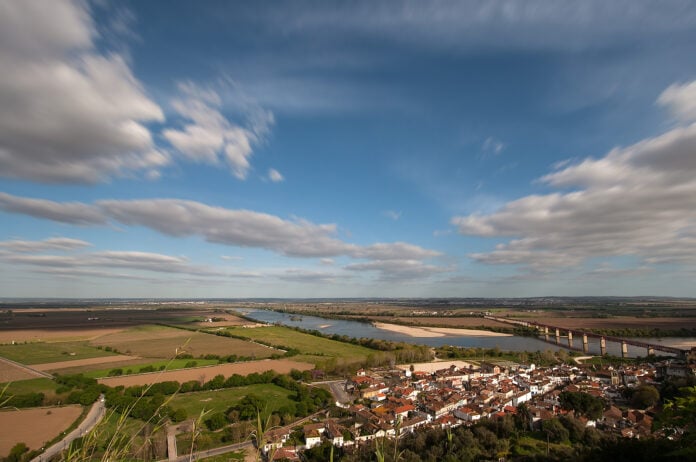Perched high on a plateau, Santarém is a viewpoint over the fertile Lezíria region, the Tagus River valley known for its agriculture, cattle breeding, and bullfighting. Often overshadowed by Lisbon, just one hour away, the city has its own culture and traditions that both defined and stemmed from the old Ribatejo (literally “above the Tagus River”) region for centuries.
Santarém is located in Central Portugal and has excellent accessibility by road and rail. It is also conveniently served by the country’s main railway line: the northern line (double track, electrified, and with a large number of connections both to Lisbon and to other parts of the country).
The city of Santarém offers visitors theaters, cinemas, art galleries, and other spaces for cultural activities. Recently restructured, the Sá da Bandeira Theater offers a varied program, including lectures, music, theater, and cinema, among others. The Taborda theater, on the other hand, is mainly geared towards the presentation of plays.
The city was part of the territories of the Order of Christ, which financially supported the Portuguese Discoveries, and developed a great deal during that time, which is still reflected today in the monuments that are so important to the history of Portuguese art. So hop on, and let’s discover everything this city has to offer!
Santarém’s History: A Blast From the Past
Santarém has been desired and contested by various civilizations throughout the ages. Its names changed over time, reflecting different rulers and cultures. From its foundation as Scallabis, through Roman, Visigothic, and Muslim occupations, to its reconquest by King Afonso Henriques in 1147, leading to its current name.
The city’s roots can be traced to Greco-Roman and Christian mythology, and it played a crucial role as a trading post and administrative center during Roman rule. Islamic occupation saw Santarém’s cultural and artistic flourishing, producing notable poets and troubadours.
Reconquered by King Afonso Henriques in 1147, Santarém received charters to establish its municipal structure. The 14th and 15th centuries marked a golden age, hosting the royal residence and becoming a cultural hub. However, the Court’s presence diminished in the 16th century, and the 1755 earthquake caused significant heritage loss.
In the 19th century, Santarém faced challenges from French invasions and the Peninsular War. Liberal ideologies found support among the locals, but the extinction of religious orders in 1834 and the subsequent destruction of heritage raised concerns.
Elevated to district capital in 1837 and gaining city status in 1868, Santarém embraced modernity with the arrival of the railway and the construction of the D. Luís I Bridge. The town’s agricultural significance was revitalized in the late 19th century with agricultural exhibitions.
Santarém played a pivotal role in the political-military movement of the Captains of April 1974, contributing to the establishment of the democratic regime in Portugal. Throughout its history, despite changing rulers, it maintained its strategic importance and reputation as an administrative center and cultural hub.
How to Get To Santarém
By Plane
Santarém doesn’t have an airport, even though it’s one of the locations on the table for the location of Lisbon’s new airport.
By Car
From Lisbon, take the A1 highway northbound and follow the signs for Santarém. Depending on traffic, your trip should take somewhere between 45 minutes and 1 hour.
From Porto, you’ll also need to take the A1 highway, but this time southbound. Pass Aveiro, Coimbra, and Leiria during your 3-hour drive before you reach Santarém.
By Bus
There are multiple daily buses connecting Lisbon to Santarém. To catch one of them, get to the Sete Rios bus terminal, the main hub in the city. The ride to Santarém takes 60 to 90 minutes.
From Porto, head to the Campo 24 de Agosto bus terminal. There are several daily buses and the journey takes somewhere between 4 and 5 hours.
By Train
From Lisbon, you can catch the train to Santarém at either the Santa Apolónia station or the Oriente station. The trip takes less than an hour.
From Porto, you’ll need to head to the Campanhã station to catch your train. After just 2 and a half hours, you’ll reach Santarém.
When to Go to Santarém
In terms of climate, Santarém is one of the extremes. Summers in these parts are very hot and Santarém often sees sporadic torrid days in July and August. Winters are the complete opposite, with lots of rain and even days when it feels like Siberia. However, when the sun shines and you’re blessed with the mild temperatures of spring and fall, any afternoon stroll through Santarém is simply delightful.
Speaking of delights, Santarém has been synonymous with gastronomy in Portugal for over four decades. The Santarém National Gastronomy Festival usually takes place in the second half of October and brings together the best of our gastronomy and winemaking to one place, with representatives from the four corners of the country serving snacks, traditional dishes, and regional delicacies in the famous Tasquinhas de Santarém.
Another national event that Santarém hosts is the National Agriculture Fair in June. From the first Ribatejo Fair in 1954, it only took ten years for it to grow to the size of the largest national agricultural fair, which has now transcended borders.
Marked by the greatest Ribatejo traditions and icons, the great Santarém Festivities take place between March 15, the date of the city’s conquest, and March 19, a municipal holiday and the day of Saint Joseph, one of Santarém’s patron saints. The genuine Ribatejo character of the “festa brava” still animates it, with the unavoidable presence of its folklore, the fandango, and the emblematic figure of the campino, the unofficial Portuguese cowboy.
A focus of pilgrimage, the traditional Feasts of the Most Holy Miracle take place on Easter Sunday, with veneration of the Holy Relic, religious celebrations, and a grand procession through the streets of Santarém, decked out and covered in carpets of flowers.
What to See in Santarém
Wherever you come from, Santarém is love at first sight. The city stands tall on the plateau that dominates the Ribatejo marshes, with the Tagus River kneeling at its feet and swearing its love. Santarém emanates that fascination of cities that are unashamed of their age.
In its contrasts of old and new, bright and gray, noble and plebeian, it finds a balance that few others can achieve. Anyone who dares to know its secrets, to get to its heart, will find it hard to escape its charm.
To visit Santarém is to dare to uncover centuries of history, layer by layer. Prehistoric remains date the probable human occupation of the alcazaba on the Santarém Plateau back to the late Bronze Age.
Other peoples also passed through and settled here, leaving a rich legacy: Phoenicians, Romans, Alans, Vandals, Suevi, Visigoths, and Muslims until the Christian Reconquista made it definitively Portuguese. Bastion of the Tagus, the taking of Santarém was decisive in the formation of Portugal.
As one of the oldest continuously inhabited cities in Portugal, it’s easy to guess that Santarém is the guardian of an extremely valuable historical legacy. And it has all the ingredients for a perfect getaway: rich heritage, admirable architecture, cultural identity, delicious gastronomy, and friendly people.
Portas do Sol and Castle
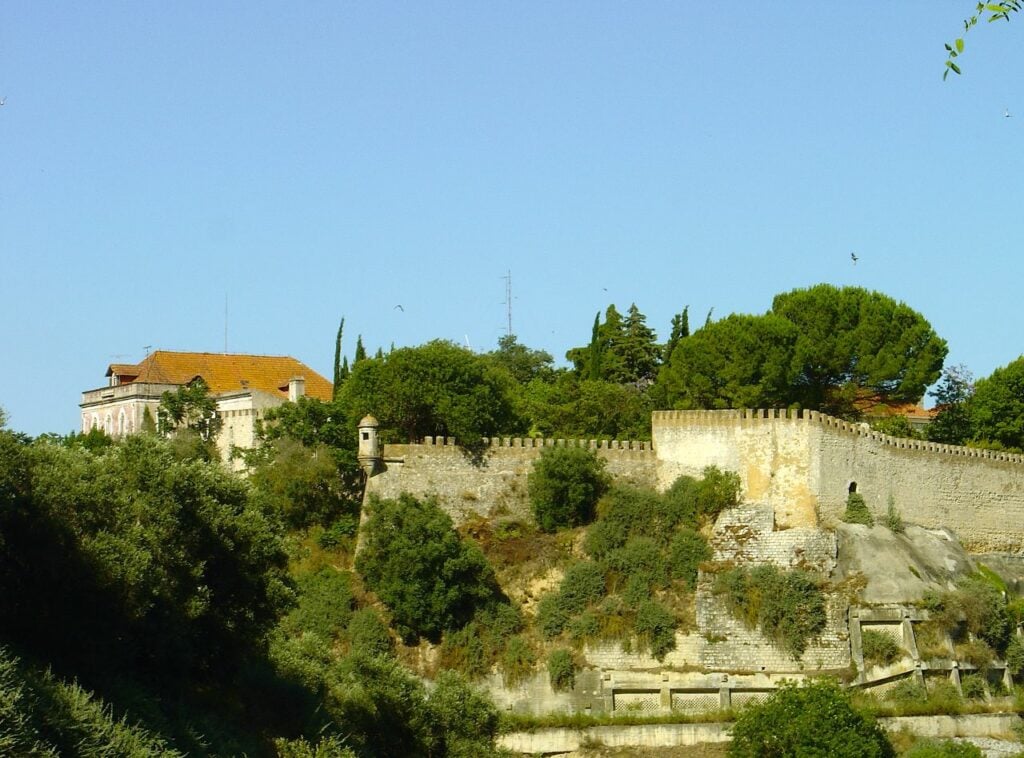
There’s no better place to start an itinerary to visit Santarém than at its ancient and lofty castle. Just follow the signs and you’re well on your way to one of Portugal’s most exciting viewpoints.
From prehistoric settlement to Portuguese castle, these stones have witnessed more than 28 centuries of human history. From the Roman “Scalabis”, to the Visigoth “Sancta Irena”, to the Muslim “Chantarim”, to current-day “Santarém”, ingeniously and audaciously taken by King Afonso Henriques in the dead of night on March 15, 1147, with just over two and a half hundred skilled Templar soldiers, via the vanished Porta da Atamarma. It is he, the first King of Portugal, who dominates the center of the garden, represented by a bronze statue – any resemblance to the statue of King Afonso Henriques in the town of Guimarães, by Soares dos Reis, is no coincidence.
But the best way to learn the story of this ancient space is at the Urbis Scallabis Interpretation Center in the garden grounds, which exhibits archaeological finds from the ancient alcazaba and tells the story of Santarém, from prehistory to the contemporary age, in multimedia format, and which is well worth a visit.
Cathedral
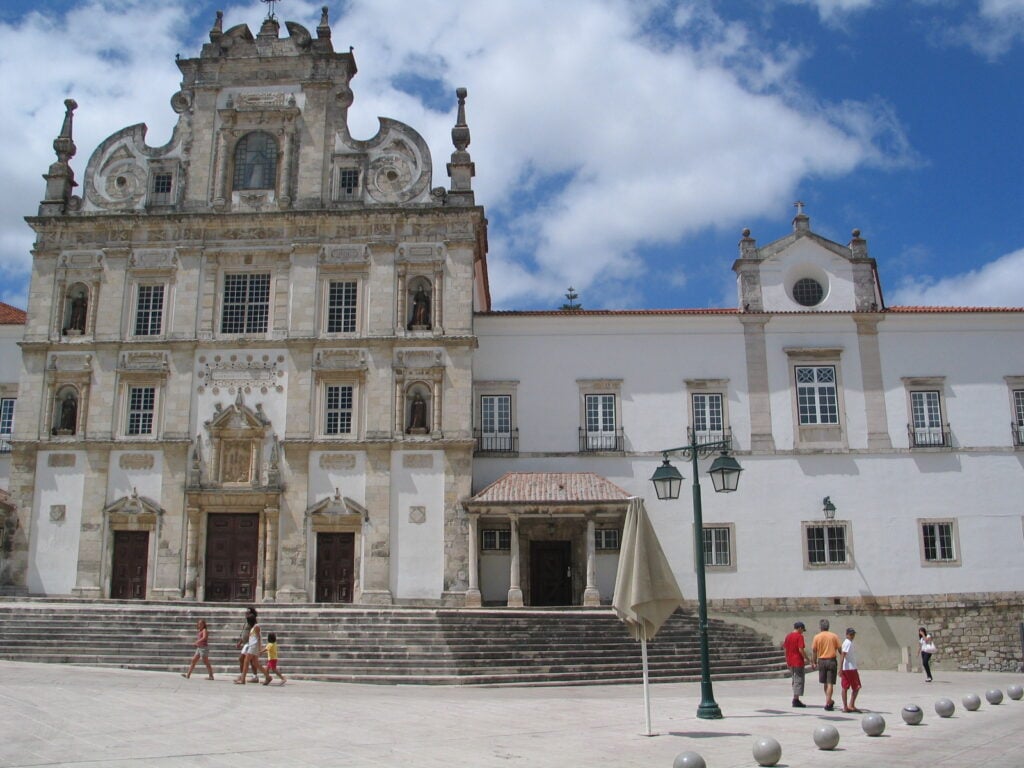
The Church of Nossa Senhora da Conceição, initially owned by the priests of the Society of Jesus and, after 1780, by the Patriarchal Seminary of Santarém, is one of the most important and beautiful sacred monuments of the Scalabitan heritage.
The interior of the single-nave temple has eight side chapels, where the splendor and richness of the Baroque dazzle us, in clear contrast with the sobriety of the frontispiece. The ceiling of the nave, in a prospective painting, from 1728 with the iconography of the ascension of Our Lady, Jesuit figures and allegories to the parts of the then-known World.
The beautiful ceiling of the Main Chapel is the work, from an architectural perspective, of the Scalabitan painter Luís Gonçalves de Sena, executed in 1754 and which complements the enchantment that the entire interior decoration conveys to us.
Eugénio Silva Palace and City Hall
Santarém’s City Hall currently occupies the Meneses Palace, a beautiful example of sunny civil architecture from the mid-17th century or, at least, the end of the 17th century.
The palace has classic lines, elegant and sober facades, full of bay windows with their characteristic 18th-century moldings and curiously pinnacled. Above the windows, the architect opened small openings for lighting the attic. The main entrance is located in the middle of the North façade, with a modeled and pinnacled stonework door, in the middle of which, on the lintel, was placed the central window, surmounted by a triangular pediment. Above the crack in this window is the coat of arms of the Meneses family, the first owners and providers of the marshes in the 18th century.
Town Market
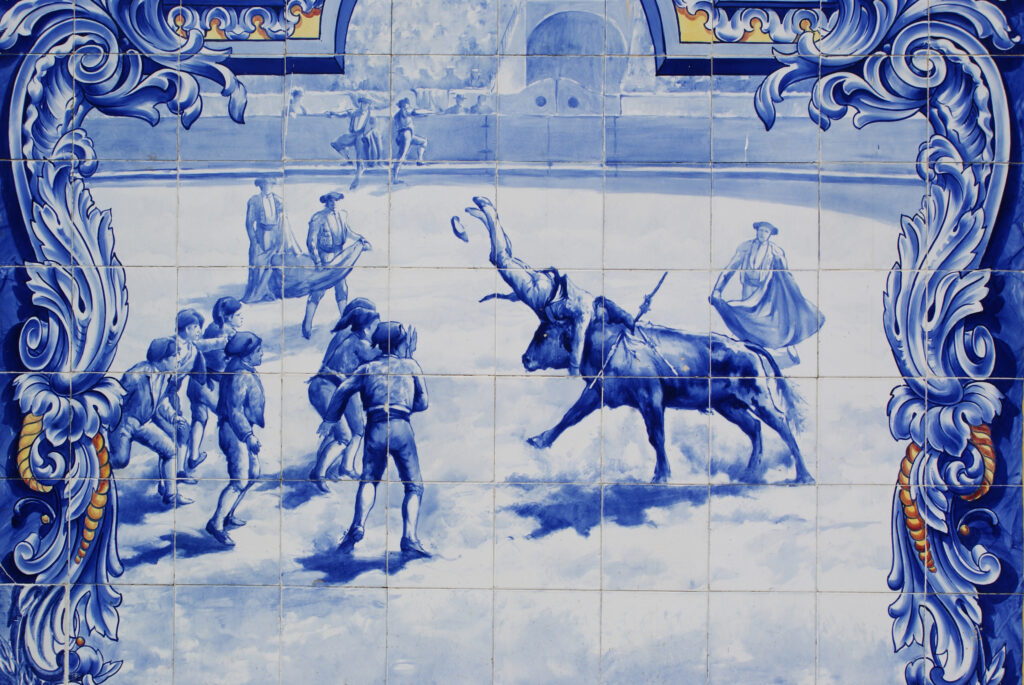
Dating from 1930 and designed by architect Cassiano Branco, it replaced the open-air market that had survived for centuries in Praça Visconde Serra do Pilar, known as Praça Velha.
In addition to the building’s architectural language, its exterior features a remarkable set of fifty-five figurative and eight decorative tile panels commissioned from the now-defunct Sacavém Factory, which represent the tourist and regional advertising motifs that characterized the Ribatejo capital at the beginning of the 20th century.
Monastery of Santa Maria de Almoster
The Monastery of Santa Maria de Almoster was founded on the initiative of Lady Berengária Aires, a lady at the court of Queen Isabel, in fulfillment of the will of her mother, Lady Sancha Pires, to erect a monastery of Cistercian nuns in Almoster.
The complex consists of the church, the dormitories (in ruins), the old refectory, and the chapter room, arranged around the cloister, of which only two sections remain. On the floor of the chapter room, there are several tombstones of abbesses, and above the benches you can see a row of 18th-century tiles.
The church, which follows the Mendicant Gothic style, is made up of three five-section naves with ogival arches, separated by pillars with pilasters attached, decorated with floral capitals.
The internal space of the temple is divided by the construction of a low Mannerist choir, which separated the area for the religious from the part for the laity.
King Luís Bridge
An important engineering feat among the metal bridges of the industrial era in Portugal and a remarkable example of iron architecture, it was inaugurated on September 17, 1881, linking Santarém to Almeirim. At the time, it was considered the largest in the Iberian Peninsula, the third in Europe and the sixth in the world. It was refurbished in 1956 to a design by Edgar Cardoso.
Ribeira de Santarém
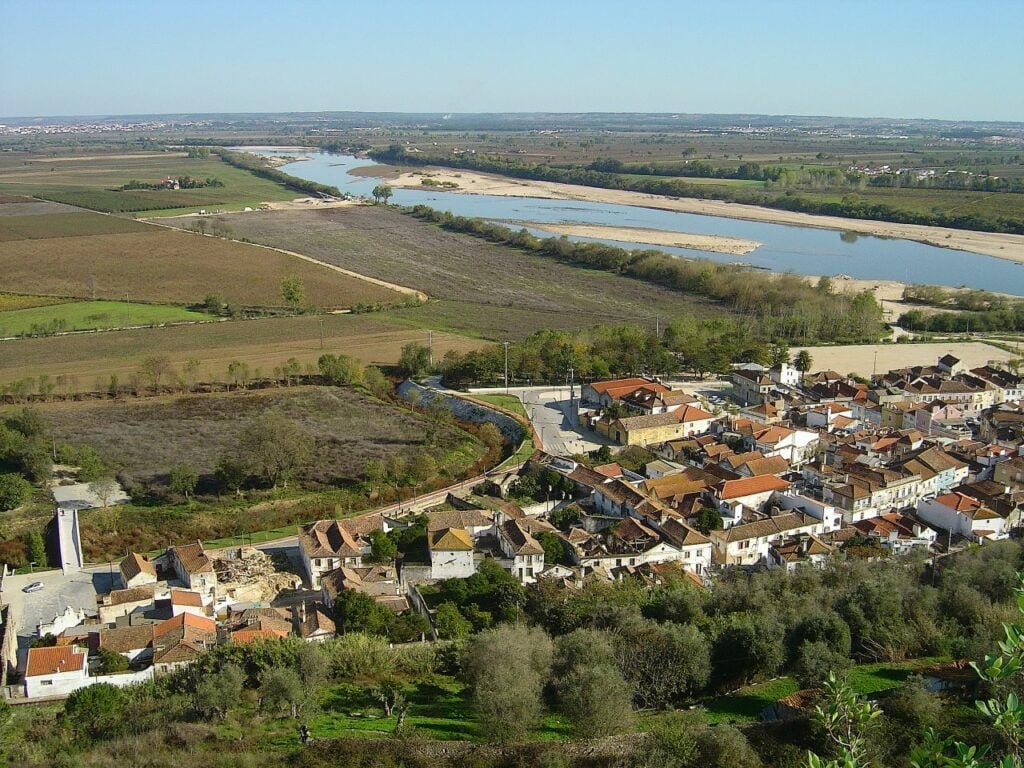
An old town linked to the river traffic that once made Santarém the gateway to Ribatejo. Houses, lanes, and alleys, as well as a few monuments (Santa Cruz Church and Palhais Fountain), make it attractive. On the banks of the Tagus, the standard of Santa Iria perpetuates the memory of the appearance of the Saint’s tomb to Queen Santa Isabel and King Dinis.
Last Thoughts
You might have noticed that I didn’t include any suggestions on where to eat, and that’s no accident. The truth is that you can find a great restaurant anywhere you go in Santarém. Just avoid anything with “chez” or any English words in their names, and you’re bound to have a great meal. I feel like picking just two or three restaurants to highlight would be unfair and reductive for a city that is known for serving great food.
But what do you say? Will you give Santarém a try? It’s only one hour away from Lisbon, so time and distance are not an excuse. Trust me, just hop on a train, walk up the castle, and sit bit the walls to watch the sunset on the horizon. Trust me, you’ll wish you could spend more time in this fantastic city.

